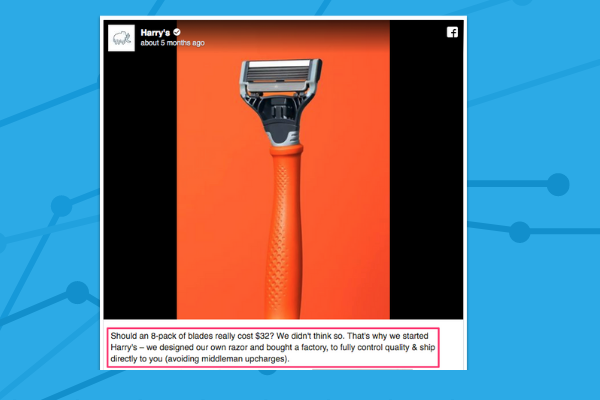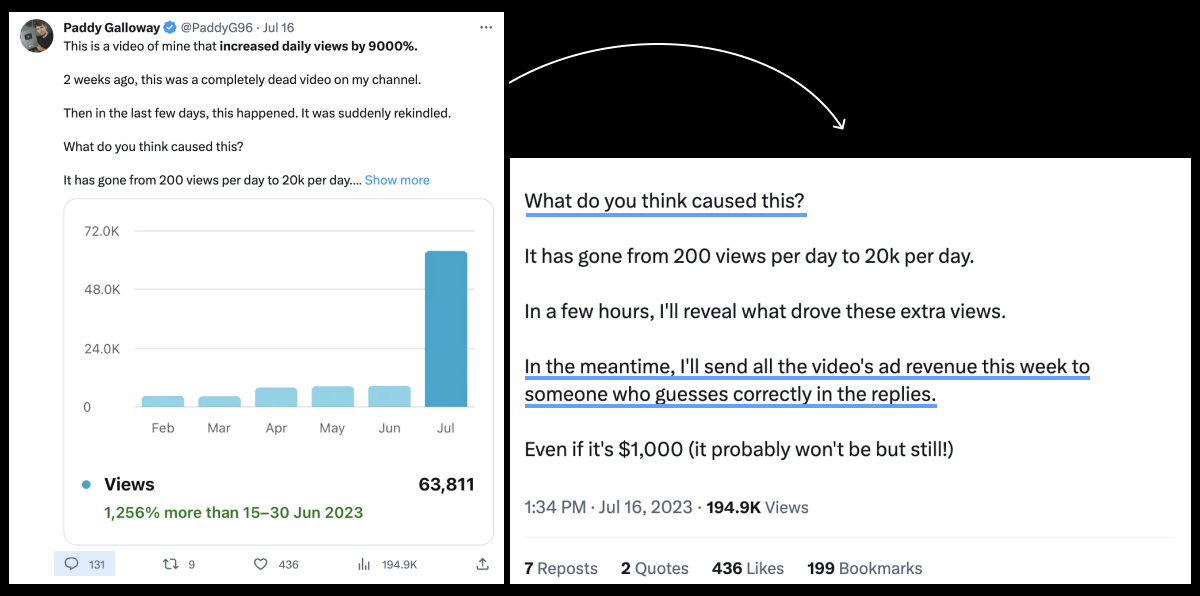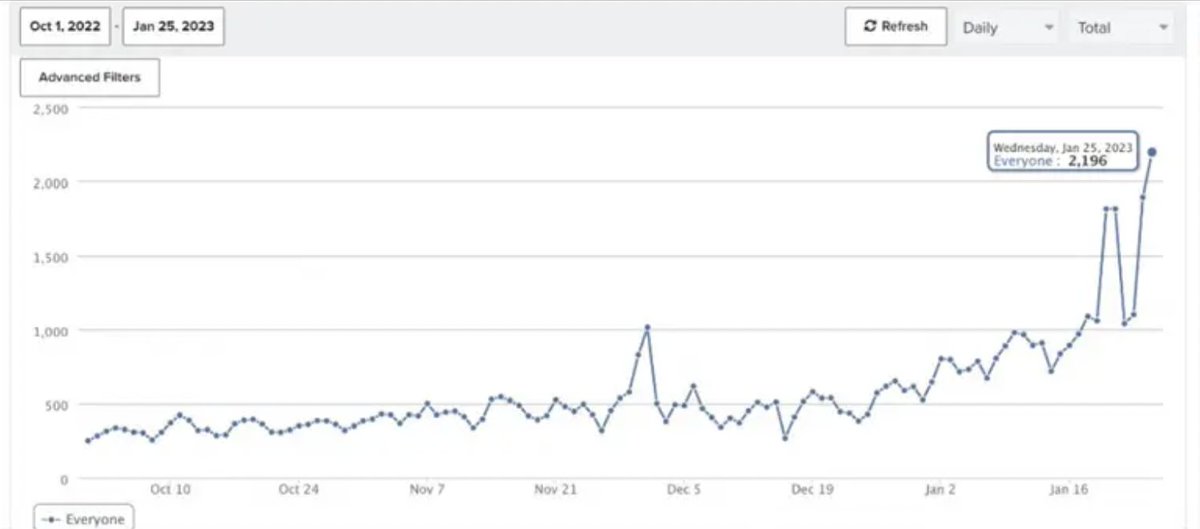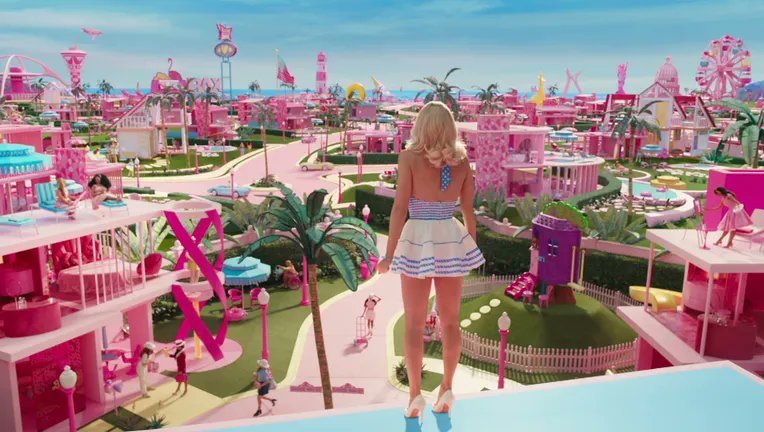Harry's collected 100k emails in just one week leading up to their launch.
Their Co-founder, Jeff Raider, said that 77% of the emails were collected via referrals.
On average, each person referred more than 3 people.
And here's how you can replicate it 🧵
Their Co-founder, Jeff Raider, said that 77% of the emails were collected via referrals.
On average, each person referred more than 3 people.
And here's how you can replicate it 🧵
The "secret sauce" to Harry's pre-launch campaign was the use of a growth loop.
And most companies go wrong by only using a funnel to acquire new users.
The problem with a funnel is that the only way to get more results is to put more in at the top.
And most companies go wrong by only using a funnel to acquire new users.
The problem with a funnel is that the only way to get more results is to put more in at the top.

With this, none of your efforts are reinvested to acquire more users.
This is the problem that a growth loop fixes.
Unlike a funnel, a growth loop focuses on compounding growth.
Because a growth loop defines how one group of new users will generate another group of new users.
This is the problem that a growth loop fixes.
Unlike a funnel, a growth loop focuses on compounding growth.
Because a growth loop defines how one group of new users will generate another group of new users.

What you'll notice is that the growth loop continues to feed itself.
For Harry's, this resulted in one user referring three on average.
In action, here's how Harry's growth loop worked:
For Harry's, this resulted in one user referring three on average.
In action, here's how Harry's growth loop worked:
For this to work, Harry's had to get people on the email list.
So, they ran Facebook ads with the goal that each user they acquired via a Facebook ad would refer one of their friends.
So, they ran Facebook ads with the goal that each user they acquired via a Facebook ad would refer one of their friends.

This way if it cost $6 to acquire a subscriber, and that subscriber referred two people then the actual customer acquisition cost was $2.
With Harry's ad, they addressed the main problem people faced — expensive razors.
With Harry's ad, they addressed the main problem people faced — expensive razors.
From the ad, you clicked through to this squeeze page.
A squeeze page has one goal and one goal only — and that's to collect email addresses.
No other links.
No other pages.
No distractions.
Just an email or an exit.
A squeeze page has one goal and one goal only — and that's to collect email addresses.
No other links.
No other pages.
No distractions.
Just an email or an exit.

Once you submitted your email, you were redirected to this referral page.
And its brilliance lies within the gamification, product milestones, clarity, and friction-free referral process.
And its brilliance lies within the gamification, product milestones, clarity, and friction-free referral process.

Harry's eliminated all friction when you shared your unique link via social with a pre-populated message. 

3 things stand out:
1. Harry's added their @. With this, curious people can click and see what Harry's is all about.
2. Their copy feels real and intriguing and piques curiosity with the line "I'm going to be #shaving for free.
3. They added the link to their prelaunch site.
1. Harry's added their @. With this, curious people can click and see what Harry's is all about.
2. Their copy feels real and intriguing and piques curiosity with the line "I'm going to be #shaving for free.
3. They added the link to their prelaunch site.
Follow @alexgarcia_atx if you want hella growth marketing breakdowns on your feed.
Threads to come:
- copywriting
- ad development
- landing page development
- newsletter optimization
Threads to come:
- copywriting
- ad development
- landing page development
- newsletter optimization
Plus, I send an exclusive growth marketing-focused newsletter to 12,000+ marketers, founders, and creators every Tuesday and Thursday.
You can join them here 👇🏽 bit.ly/3kn2IAd
You can join them here 👇🏽 bit.ly/3kn2IAd

TL;DR
1. Harry's focused on creating a bulletproof growth loop
2. They used a squeeze page to convert traffic to subs
3. A squeeze page has one focus -- email collection
4. The referral program gamified the referral process
5. They reduced all friction with a generated link
1. Harry's focused on creating a bulletproof growth loop
2. They used a squeeze page to convert traffic to subs
3. A squeeze page has one focus -- email collection
4. The referral program gamified the referral process
5. They reduced all friction with a generated link
6. The referral page showed how many people have signed up
7. And created a pre-populated message to share with friends
7. You won product which converted you to become a fan
7. And created a pre-populated message to share with friends
7. You won product which converted you to become a fan
• • •
Missing some Tweet in this thread? You can try to
force a refresh
























